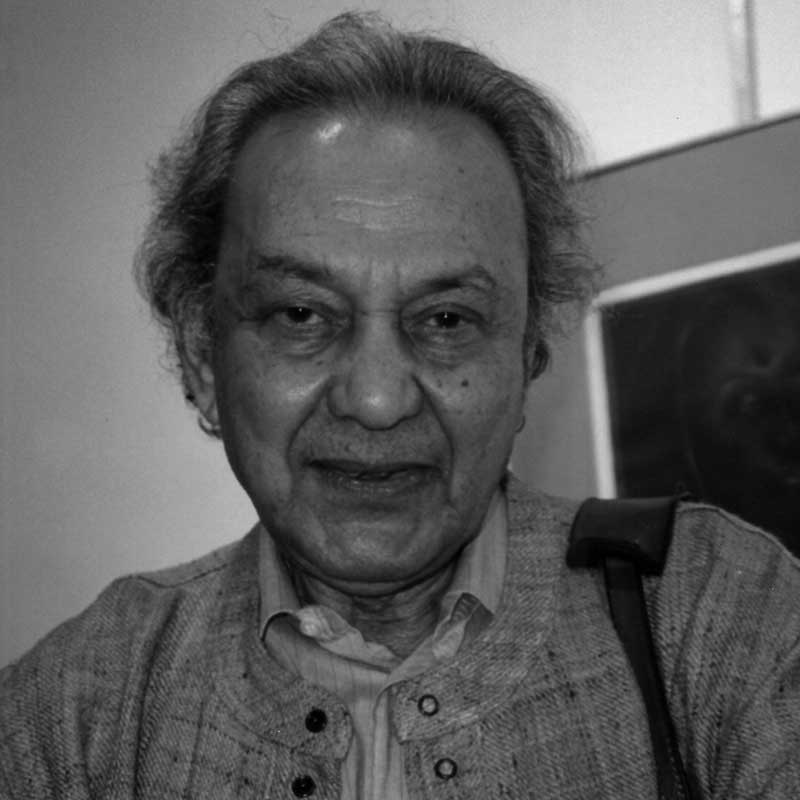
A part of Connect The Dots series, Piramal Museum of Art presented the third walk through in collaboration with JNAF and CSMVS.
Jehangir K.S. Nicholson (1915-2001) was a trained chartered accountant and cotton merchant. However, art was his passion. From 1968, following his wife’s death in 1968, hbe began to passionately appreciate and collect art. He became a regular in the Bombay art scene and sought out artworks, especially of the Bombay Progressives. As a result, his collection reflects a rich series of artworks from a range of Indian modern contemporary artists, creating an artistic narrative vital to Mumbai’s modern art history. The Jehangir Nicholson Art Foundation was set up to take care of one of the richest private collections of modern Indian art. The collection was put together over at least five decades by Jehangir KS Nicholson, who bought his first painting in 1968. He continued building on this collection until his death in 2001.
The walkthrough began with a background introduction to the Progressive Artists Group and the art scene in Mumbai and subsequently focused on the history of the collection, the backdrop in which the art was collected as well as the uniqueness of each artwork in it with a spotlight on 18 Razas in the JNAF Collection, three of which have been loaned to the Piramal Museum of Art’s ongoing exhibition, S.H. Raza: Traversing Terrains.

S.H.Raza was born in 1922 in Babaria, Madhya Pradesh. He studied at the Nagpur School of Art, Nagpur (1939–43), followed by Sir J. J. School of Art, Bombay (1943–47), before moving to France in October 1950 to study at the École Nationale Supérieure des Beaux-Arts in Paris (1950-53). After his studies, he travelled across Europe, and continued to live and exhibit his work in Paris.
In 1947, he co-founded the revolutionary Bombay Progressive Artists’ Group along with K. H. Ara and F.N. Souza. This group set out to break free from the influences of European realism in Indian art and bring Indian inner vision into art.
His works are mainly abstracts in oil or acrylic, with a very rich use of colour, replete with icons from Indian cosmology as well as its philosophy. His work evolved from experimenting with currents of Western Modernism in the 1940s by painting expressionistic landscapes and townscapes, inspired in part by the bucolic countryside of rural France to more abstract landscapes of the mind eventually incorporating elements of Tantrism from Indian scriptures. These landscapes were characterised by gestural brushstrokes and impasto application of paint.
By the 1970s, Raza had grown increasingly restless with his own work and wanted to find a new direction. His trips to India made him study Indian culture more closely, resulting in the ‘Bindu’, which signified his rebirth as a painter in 1980. ‘Bindu’ represented the centre of creation and existence progressing towards forms and colour as well as energy, sound, space and time. It took his work deeper and brought in his new-found Indian vision ethnography.
He later added newer dimensions with the inclusion of themes around the Tribhuj or Triangle which bolstered Indian concepts of space and time, as well as that of ‘prakriti–purusha‘-the female and the male energy. Raza said his work was his own inner experience and involvement with the mysteries of nature and form which he expressed in colour, line, space and light. His work took another leap in 2000, when he began to express his deepened insights and thoughts on Indian spirituality and created works around the Kundalini, Nagas and the Mahabharat. He returned to India in 2010.
He was awarded the Prix de la critique in Paris in 1956 becoming the first non-French artist to receive the honour. He also received the Padma Shri and Fellowship of the Lalit Kala Akademi in 1981, Padma Bhushan in 2007 and Padma Vibhushan in 2013. He was conferred with the highest French civilian honour, the Commandeur de la Legion d’honneur (Legion of Honour) in 2015. He founded the ‘Raza Foundation’ in India for promotion of art among Indian youth. He passed away in 2016.